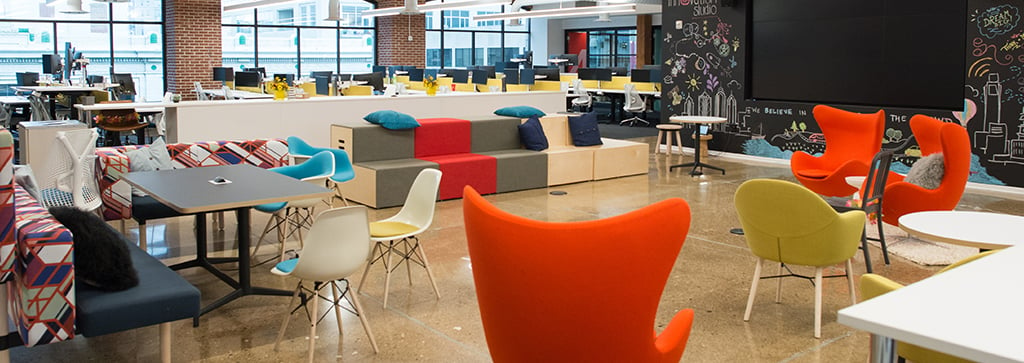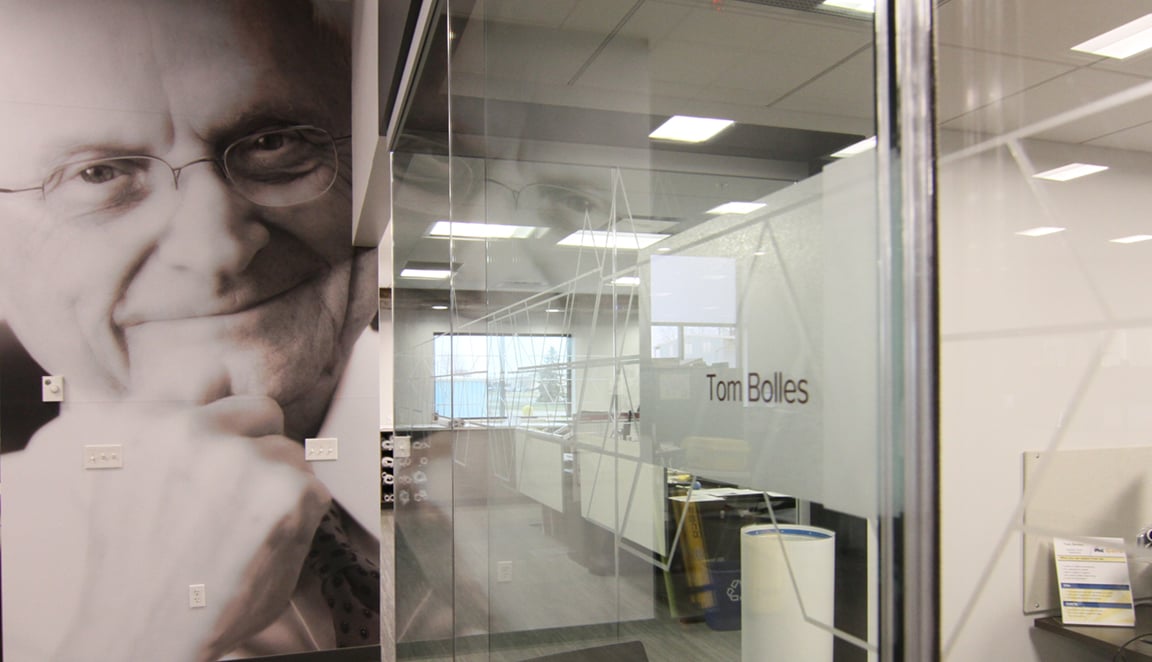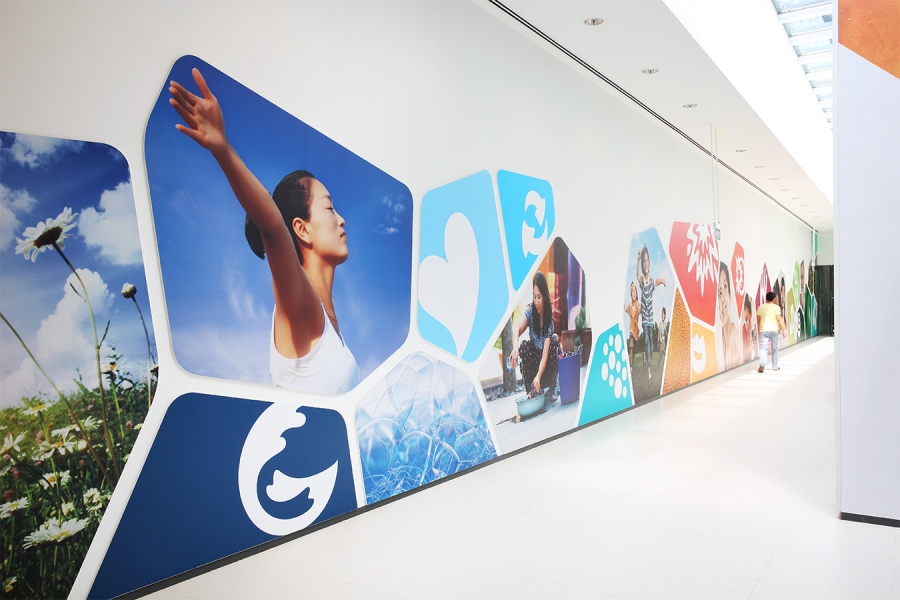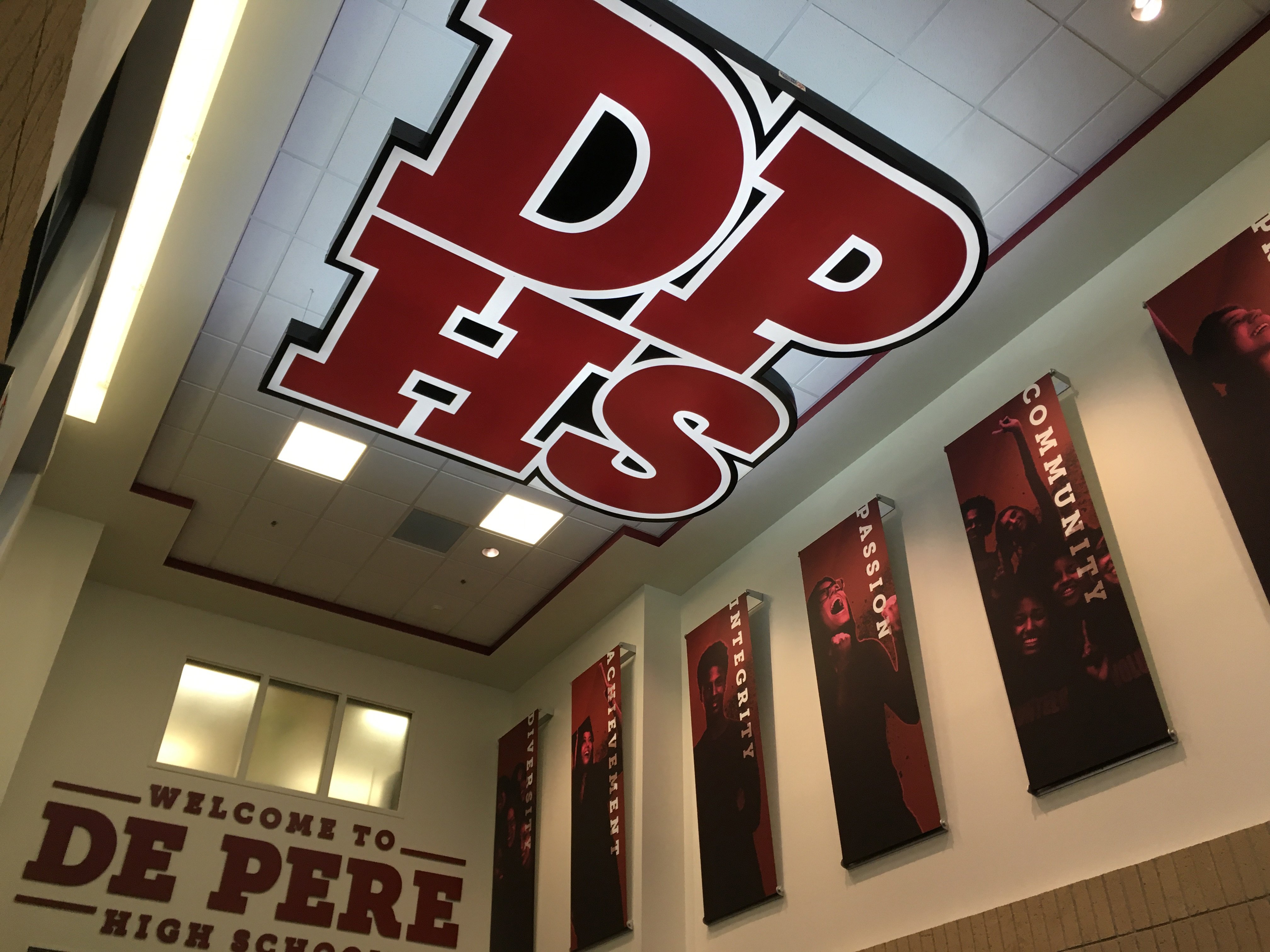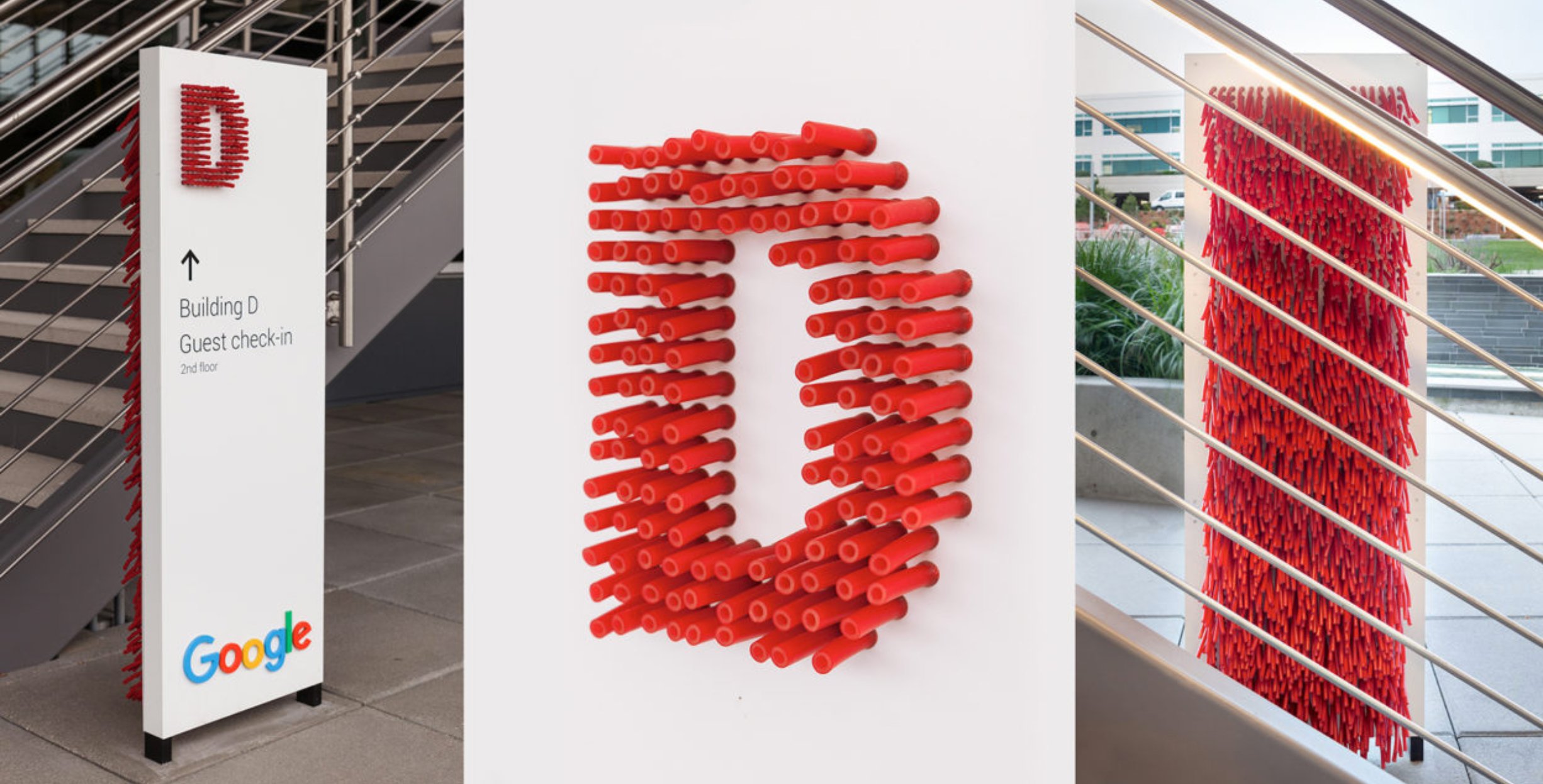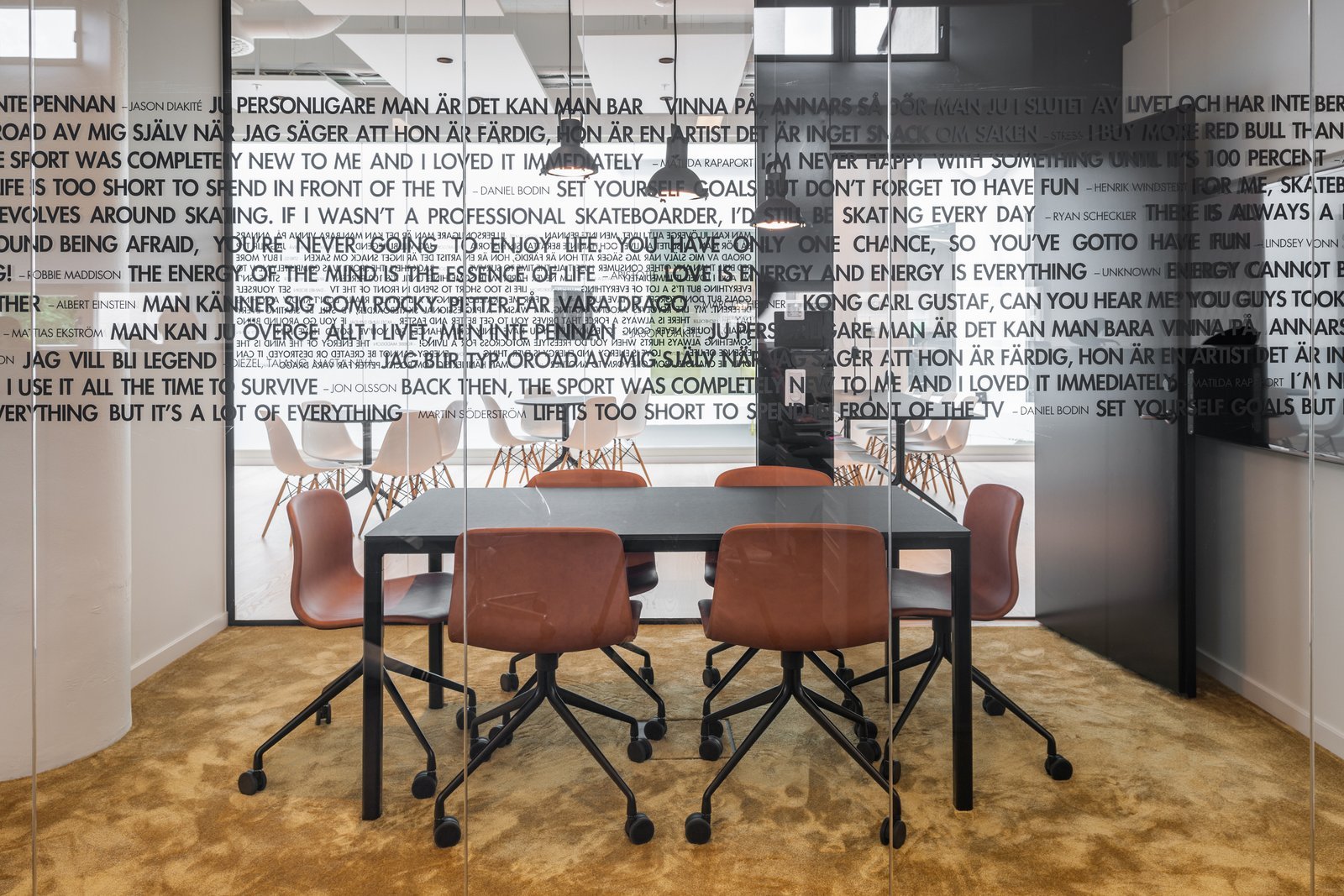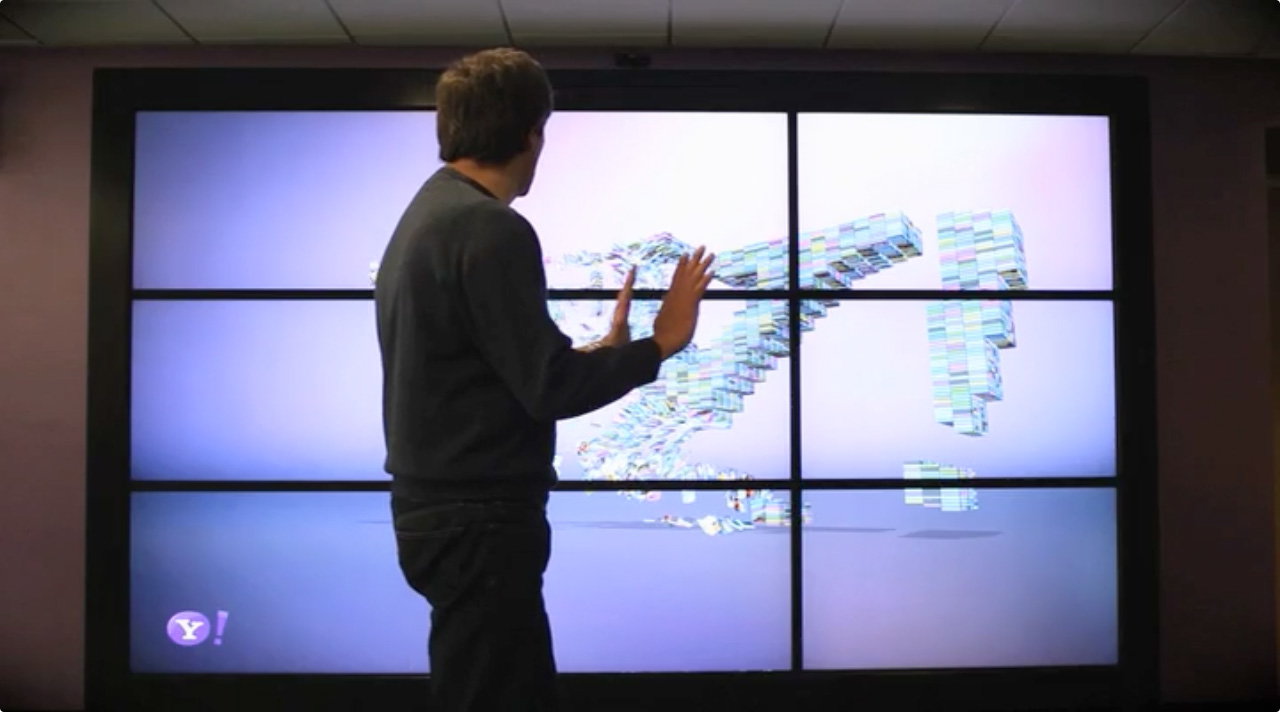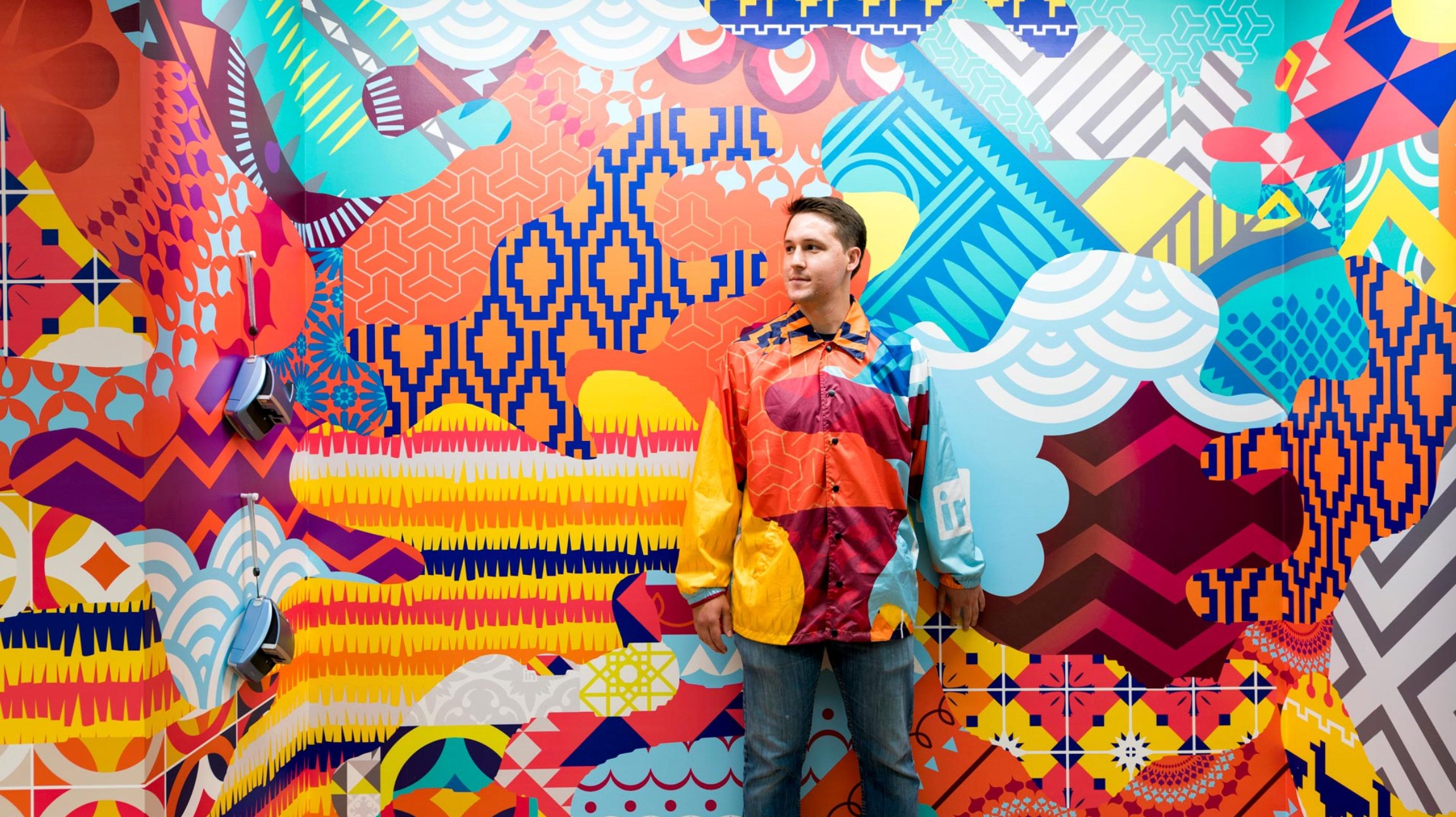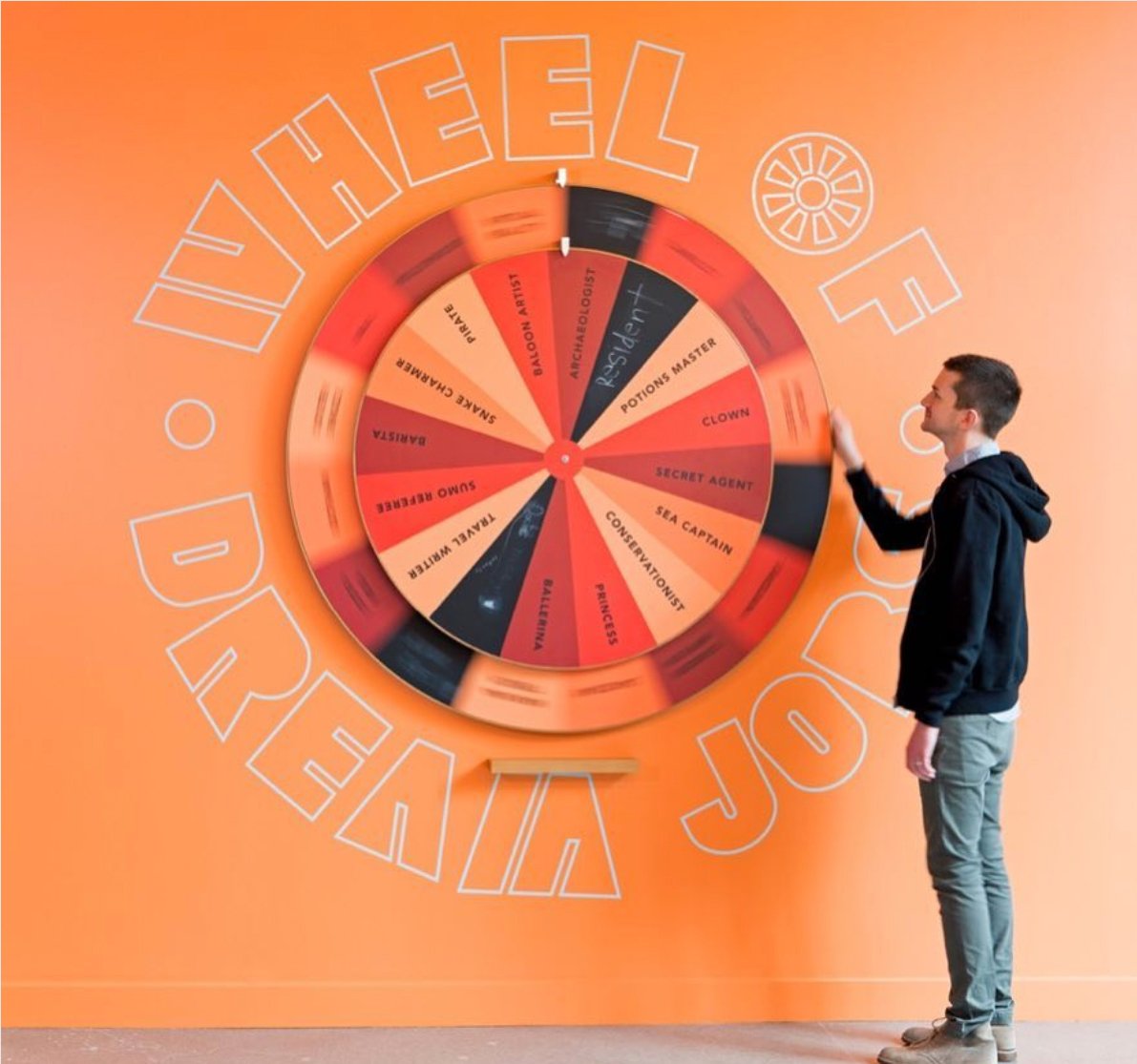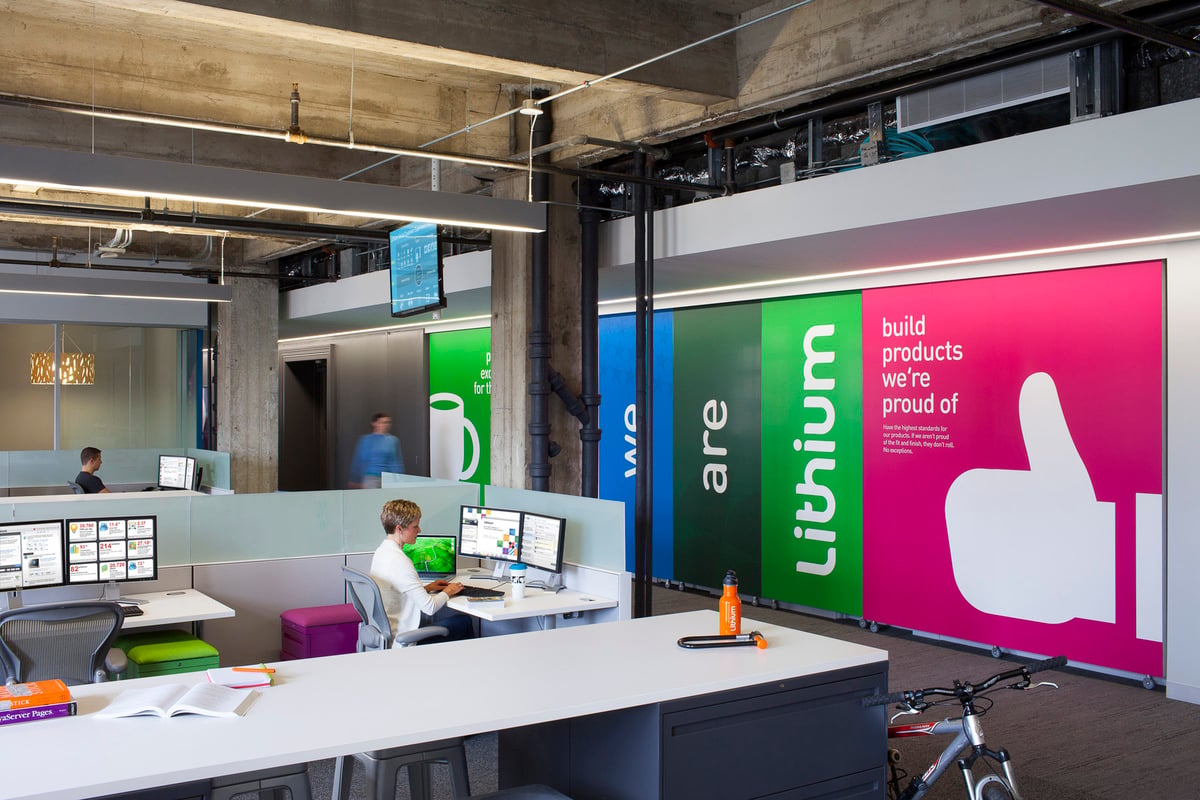We as humans are attracted to experiences.
And those experiences are tied to place. How we experience a physical space shapes and molds our thoughts and actions—how we react to or perceive not only the place, but whatever’s associated with it. This holds true for your company environment, too.
Your space can make or break how current or future employees see you as an employer of choice and how potential customers see you as a valued partner. It can be one of your most powerful ways to make people believers in you.
And there’s evidence to back that up.
Gensler’s 2017 Experience Index indicates five main manners in which people experience a space. These “modes of experience,” or intentions with which people interact with a space, include:
- Task
- Social
- Discovery
- Entertainment
- Aspiration
In these findings, they found that “people are 10 times more likely to share their experience on social media” when a branded space has unique design features and include dynamic environmental graphic design.
But it goes beyond just creating eye-catching graphics.
You must incorporate your vision, mission, values and position so that you can tell your unique story and have buy-in from your employees to deliver a premium experience to customers. According to Harvard Business Review, “You need to have employees who understand and embrace the distinct ways you create value for customers, the points that differentiate your brand from the competition, and the unique personality that your company uses to express itself.”
But you may ask yourself, how do I create an authentic branded space that sets us apart from our competition and influences people? Next, we’ll explore:
- what environmental graphic design is, and the essentials
- 5 types of environmental graphic design
- and 5 ways it influences people and culture
What Is Environmental Graphic Design?
In its simplest form, environmental graphic design is an extension of your brand experience through the design of interior and exterior spaces. It’s a way to bring very tangible form to how people experience your brand.
Spaces that are prime candidates for this include but aren’t limited to: corporate headquarters, retail spaces, hospitals, schools, universities, sports venues, and anywhere else people are engaged within a space.
These brand spaces use graphic elements or design to create brand stories through messaging, color, imagery and typography that align with your company.
Don’t Forget: It’s an Extension of Your Brand
Too many times, though, people think of environmental graphic design as just words, colors and images that align with their brand. This is partially, but not totally true.
You shouldn’t create graphics that just look and sound good, but ones that are backed by your beliefs. And what I mean by beliefs is your vision, mission, values and brand position. Just like marketing communications that you share internally and externally with employees, prospects and customers.
Your brand spaces need to embrace the distinct ways you:
- create value for customers
- your differentiation points from the competition
- your unique personality that makes you you.
In doing so, you reinforce why people want to work with and for you and why customers feel they need to do business with you.
But if you don’t wrap your brand space experience around your beliefs, you’re creating a brand that has two sets of values. This creates a disconnect between your employee experience and your customer experience and how employees engage with customers.
5 Types of Environmental Graphic Design
Now, environmental graphic design is a broad topic. So let’s break it down, looking at the different kinds of elements that exist in environmental graphic design, along with some new and exciting ones. Let’s explore.
1. Branded Environments
These are the primary physical spaces where employees and customers interact on a day-to-day basis. Environmental graphics bring the space to life through storytelling, while setting the mood for how you would like people to navigate through the environment. From their very first step into your space, there should be depictions of your brand that give a sense of belonging and understanding.
Elements could be your logo in the entryway or banners listing your values through words and images in the lobby. As someone walks through your space they should feel and see a well-crafted story that takes them on a brand experience journey that’s authentic.
2. Signage and Wayfinding
Simply put, signage and wayfinding create a visual path through an environment. These are the tools that help people navigate through your space, but they should still feel connected to your brand.
When someone enters your space, they’ve entered into an unfamiliar environment and they need to make decisions that they’re not used to making. By using consistent brand design elements like color, type, icons and placement of signage and wayfinding, you’ll help guide people from one place to another more efficiently.
3. Walls and Glass Graphics
Walls and glass are blank canvases just waiting to become an extension of your brand and influence the user experience. Just like signage and wayfinding, everything should work cohesively from messaging to look and feel. Use of words or phrases of inspiration on conference room glass walls can create a sense of belonging.
Large images and illustrations can evoke creativity or calmness depending on what mood you want to nurture within a space. These are the areas people come in contact with on a regular basis throughout the day.
They can create a lasting first impression for visitors and an inspirational place for employees.
4. Interactive Media: Combining Video, Audio, & Imagery
With the increase in digital technology and how content, motion and interaction can enhance the user experience between people and spaces, it’s no wonder that interactive media is playing a larger role in environmental graphic design.
More than ever, people can become a part of your brand by engaging it through virtual reality, video games, animation and video. By creating this two-way communication, as opposed to the one-way communication of traditional environmental graphic design, you are able to trigger human sensory touch-points such as sound, touch and sight. This will increase the effectiveness of your space to create a lasting impression.
5. Social Media
Just like interactive media, social media has become the new “thing” in environments. Social media allows people to interact in real time, sharing their experiences with visitors or employees in different locations.
Companies like Linkedin have embraced this technology. At their Silicon Valley headquarters, they created areas with vibrant murals that included phrases like “Better Together” and “Change Is Good.” In these spaces, employees could take a selfie and share them with other employees.
This has helped to create a stronger bond between employees and the company.
5 Ways Environmental Design Influences People and Workplace Culture
Our environments are constantly changing to fit a diverse group of people. Each person has been influenced by what they have seen on TV, social media and other media outlets, and they expect the same type of experience wherever they go.
You need to keep this in mind when you create your space. Here we’ll look into what you can do to give the best user experience and stay ahead of your competition when it comes to employee recruitment and retention.
1. Rejuvenates the Mind (Positive Thinking)
As people go through their day, they are bombarded by phone calls, emails requesting that proposal right away, chats, texts, you name it. And if that weren’t enough, they get that occasional call from school that their child is sick. It’s no wonder that when employees come to work they’re stressed out. And that bleeds into the experience customers have with you. Here is your chance to create a supportive environment that puts them at ease, and helps keep your customer experience at its best.
Things as simple as the right use of a color can change someone’s mood over time. A great example of this is hospital rooms and lobbies that are strategically painted a certain color to calm people and put them at peace. Words that promote inspiration can give someone a boost of energy when they are having a bad day. Images can do the same.
Science has shown that images of nature relax and nurture people’s minds. Remember, graphic design in environments can be a powerful psychological tool when used right.
2. Promotes Creative Thinking
When talking to any employer, one of the top things they are looking for from recruits and employees is creativity. Nothing stifles this more than a space that is confined and devoid of character. It has been shown that disruption brings creativity. When you have areas where people can meet and engage one another, creativity has been proven to flourish. Within these areas it’s not just about human engagement, but how you use graphic design to stimulate their minds.
3. Brand Authenticity
Without brand authenticity in your space, you’re just creating a “cool” space. A space where people won’t live and breathe your brand and deliver an outstanding brand experience. You will also miss out on one of the best ways to make your employees—even your customers—brand loyalists and advocates.
So, whenever designing your space keep in mind your vision, mission, values and position to truly create an authentic brand space.
4. Create a Balanced Space
What does creating a balanced space mean? What it means is creating a space where there is a balance of individual and cooperative areas. Giving employees the opportunity to work on their own or engage with others as they wish. It has been proven that the open workspace concept just isn’t quite all it was cracked up to be.
This is where graphic design can create distinction between areas and at the same time create structure within a space. The use of panels and privacy screens accompanied with graphics can create designated areas for individual focus and group collaboration. By creating these spaces, you can promote employee satisfaction and engagement while building brand loyalty.
5. Your Workspace Can Be Your Best Recruitment Tool
With competition at an all-time high for top talent and with no end in sight, you need everything at your disposal to get ahead of your competition. It’s no longer just what incentives or benefits you give employees. It’s about how rewarding of an experience you can offer them.
And recruits no longer have to visit your space to get a feeling of what it’s like to work with you. They have social media, videos, company careers pages and a slew of other resources to find out what working there is really like.
This is where your space becomes one of your biggest recruitment tools. It can be a compelling way to showcase your brand identity. It can communicate your vision, mission and values. Employees are looking for a place that gives them a sense of purpose and belonging, where their ideas and values align with their employer. You need to show how people come first. How you understand their needs. How you recognize that everyone works differently. Your space is your best advocate.
Recap: Creating Your Unique Branded Environment Experience
Let’s sum it up with some key takeaways from each section…
What Is Environmental Graphic Design?
- It’s an extension of your brand for you exterior and interior spaces.
- Always go back to your vision, mission, values and position to make sure your space is aligned with who you are.
5 Types of Environmental Graphic Design
- Branded environments, signage and wayfinding, glass and walls, interactive media and social media. These are core must-haves when designing a space.
- Things change and so does technology. Every few years go back and evaluate what you’ve done and how you can incorporate new emerging mediums.
5 Ways Environmental Design Influences People and Workplace Culture
- Creates a positive atmosphere to help people be productive and engaged.
- Promotes creative thinking. Have spaces where people can interact and be disruptive. Use graphics to stimulate their minds.
- Makes your space authentic. If it’s not really who you are, it will not create brand loyalists and advocates.
- Creates balance. Your space needs to be balanced for when people want to work in a group setting or alone. Use panels and dividers that are mobile to create these spaces, and don’t forget about the graphics.
- Helps you recruit. Let’s not forget that it’s one of your most important recruitment tools. Make sure that you have a strong brand presence within your physical space. First impressions last a long time.
Whether you’re designing an inspirational space for daily users or creating a lasting first impression for guests, purposeful and relevant environmental graphic design will help you build culture and influence customers.
If your still unsure of how to create your branded space, feel free to reach out to us. We are more than happy to help.

